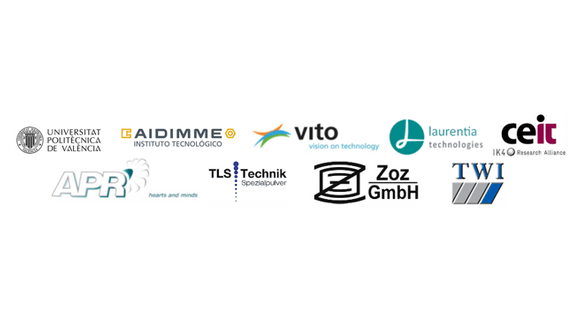Wed, 05 August, 2020
The European Innovation Radar has identified TWI Ltd and project partner APR Srl of Turin, Italy as key innovators for the NANOTUN3D Project.
The Innovation Radar is a support initiative that focuses on the identification of high-potential innovations in H2020 projects as well as the key businesses in delivering these projects.
The NANOTUN3D Project, which was working to optimise powder bed additive manufacturing for Ti-based nano-additive material, has been determined to be ‘tech ready’ as well as addressing the needs of existing markets. The project will now join over 3600 others on the European Commission’s Innovation Radar platform.
The project took advantage of additive manufacturing alongside the development of a specially-tailored Ti-based nano-additive material to achieve dramatic improvements in structural parts for aerospace, astrospace, mobility and equipment sectors.
TWI additive manufacturing expert, Miguel Zavala explains more about the innovation here:
Could you briefly explain the aims of the project and what it delivers for industry?
The project aims to deliver expected savings of between 40% and 50% for material in critical applications, in addition to inherent AM benefits such as decrease in throughput times, tool-less production and high buy-to-fly ratios. The project developed Nano-modified Ti6Al4V alloy with enhanced structural performance compared to the standard alloy. The nano-modified material has been tested in laser (PBF-LB) and electron beam (PBF-EB) powder bed fusion processes, with validated supply chain workflow and a health, safety and environmental (HSE) management system for the manufacture of ‘virtual demonstrators’ from industrial sectors.
How was additive manufacturing (AM) integral to the success of the project?
The whole life cycle of the NANOTUN3D material has been designed with AM processability in mind. The aims of the project are only possible with efficient implementation of AM technologies.
The development of health and safety protocols was important to the project delivery, why is that so critical with this work?
The project was supported by the development of a health, safety and environmental (HSE) management system and protocols to allow for the qualification and certification of materials and processes. The HSE management system implementation is necessary to deal with the safety risks associated with the use of nanoparticles along the value stream, as well as to define a reliable workflow of the manufacturing, handling and processing of the nano-modified material, from core-shell production to final part.
What were the main technical challenges associated with NANOTUN3D?
A great technical challenge was to identify optimal workflow and process parameters to additively manufacture the nano-modified material with minimal internal defects. Laser powder bed fusion (PBF-LB) process parameters were developed and optimised at TWI Yorkshire for the new nano-modified Ti6Al4V alloy. Powder reusability strategies were defined and different post-thermal treatments assessed in the project.
What were the final outcomes of the project and how did TWI help deliver them?
There were dramatic mechanical improvements of the nano-modified Ti6Al4V alloy compared to the standard Ti6Al4V – ASTM F2924-14 material. TWI delivered the PBF-LB process workflow, including implementation of optimised process parameters as well as powder handling and reusability strategies, which are critical to successfully achieve project aims and objectives.

This NANOTUN3D project has received funding from the European Union's Horizon 2020 research and innovation programme under grant agreement No 685952
You can find out more about the project by contacting us, below, and visit the dedicated project website here.